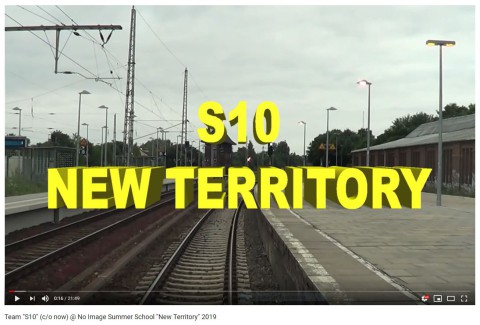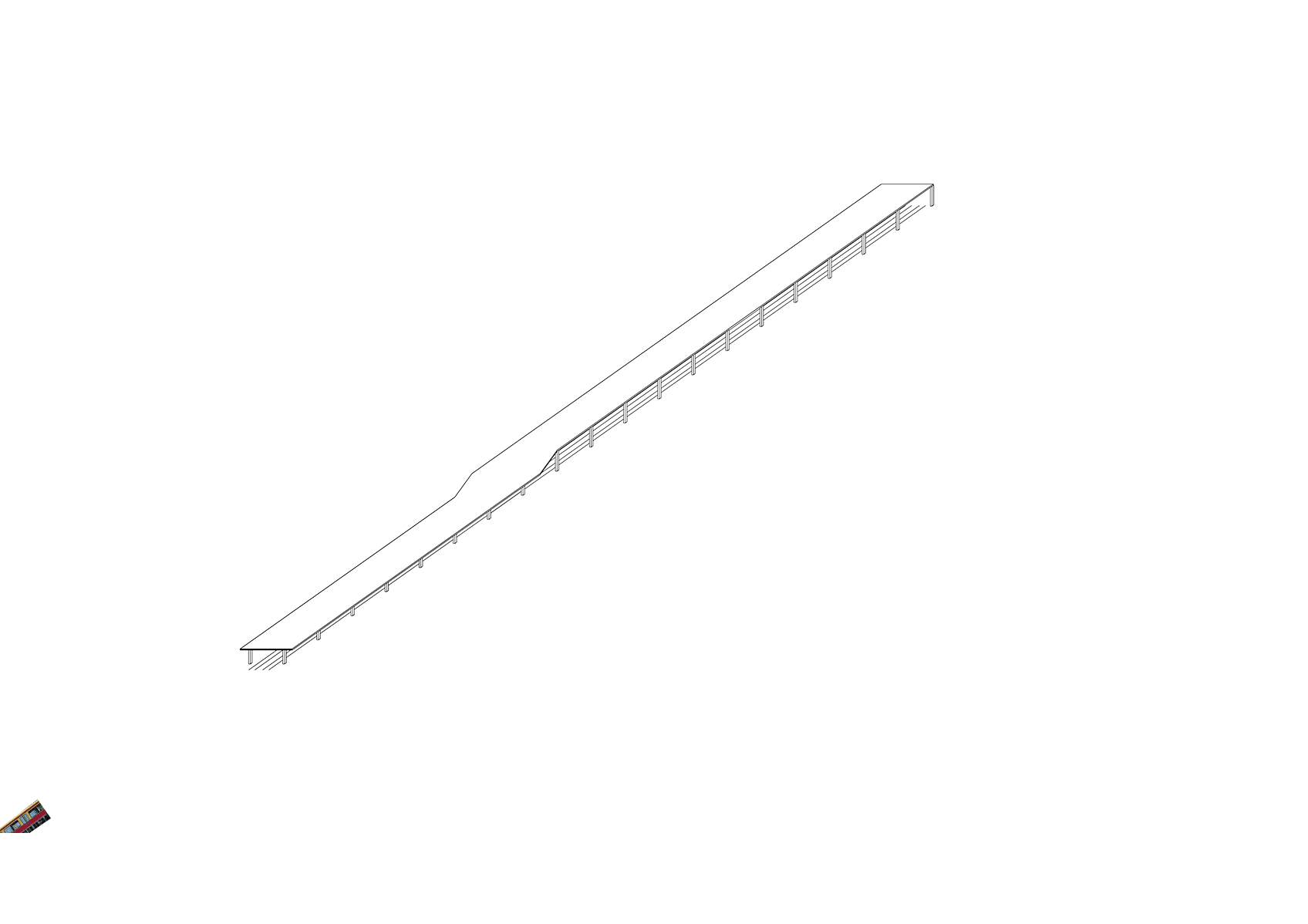- Typology
- Research
- Project
- No Image Summer School - New Territory 035
- Partner
TU Berlin - Institut für Architektur: Projektwerkstatt "No-Image" in collaboration with Chair for Urban Design & Urbanization (CUD) + c/o now, 51n4e (Dieter Leyssen, Harold Vermeiren) & GRAU (Susanne Eliasson)
- year
- 2019
- Location
- Hochschule für Technik und Wirtschaft Berlin (HTW Berlin) - Campus Treskowallee, Bezirk Lichtenberg, Berlin, Deutschland
- The "S10" was developed by c/o now with the participants of the group they accompanied during the No-Image Summer School 2019. The starting point is the scenario of Berlin growing beyond its administrative borders into Brandenburg. Instead of leaving the shaping of this process exclusively to the surrounding municipalities - which are expected to designate new residential areas oriented towards single-family homes with double garages and thus trigger an explosive sprawl wave - the project calls for an intensification of joint state planning by the two federal states of Berlin and Brandenburg. Considering the role of infrastructural measures in ensuring minimum urban standards, the group also proposes project-oriented collaborations between the Federal States, local authorities and semi-public bodies such as Deutsche Bahn and state-owned housing cooperatives. An example of this is the new S-Bahn line S10. It connects the long-distance and regional railway station of Bernau in Brandenburg in the north-east of Berlin - including Brandenburg agglomeration municipalities and partly peripheral districts in the east of Berlin - with the new Berlin Brandenburg Airport in the southeast of Berlin. In addition to 19 existing S-Bahn stations, the 22 stops on the line use an upgraded above-ground underground station and two newly constructed stations, as well as tracks already laid by Deutsche Bahn. Starting from the stations as natural places of high social frequencies, the group, inspired by the hybrid infrastructure-city visions of Ralf Schüler and Ursulina Schüler-Witte (Bandstadt Grunewald) and the large-scale approaches in the teaching of Oswald Mathias Unger at the TU Berlin, has speculated about the S10 as a continuous structure that offers an urban superstructure in addition to public transport. In addition, the group understands the S10-building as a threshold of a constantly reconfiguring, densifying urban space vis-à-vis supply areas close to the metropolis or areas of regeneration for flora and fauna in the so-called "countryside".
- team c/o now
- David Dietrich, Zahide Gülşah Durmaz, Gabrielė Dužinskytė, Thomas Haas, Fabian Herzog, Sausan Haj Abdová, Nikola Joksimović, Nils Kaltenpoth, Nicole Mroczek
- special thanks
- Sebastian Weindauer, David Bauer, Brendan Finney (No Image); Dieter Leyssen, Harold Vermeiren (51N4E); Sussane Eliasson (GRAU)
 035
035
Fig.___See the final presetnation movie at https://www.youtube.com/watch?v=-Pbx3uSbedI
© c/o now
 035
035
Fig.___Nils Kaltenpoth:
© Nils Kaltenpoth
 035
035
Fig.___Sausan Haj Abdová:
© Sausan Haj Abdová
 035
035
Fig.___Nikola Joksimović:
© Nikola Joksimović
 035
035
Fig.___Fabian Herzog:
© Fabian Herzog
![]() 035
035
Fig.___David Dietrich:
© David Dietrich
 035
035
Fig.___Thomas Haas
© Thomas Haas
 035
035
Fig.___© c/o now
![]() 035
035
Fig.___Gabrielė Dužinskytė:
© Gabrielė Dužinskytė
 035
035
Fig.___© c/o now
![Historic ride.]() 035
035
Fig.___© c/o now
![]() 035
035
Fig.___S10.
© c/o now
 035
035
Fig.___Peel slowly and see - we gonna deal with a banana !!!
© c/o now
- 035
Gif.___NO-IMAGE // SUMMER SCHOOL 2019 – NEW TERRITORY
Third edition of future city fringe developments takes place in Berlin.
---
On 25 July 2019, the No-Image Summer School Series will launch its third edition at Hochschule für Technik und Wirtschaft (HTW) Berlin.The six day session opens with a public round-table discussion with guests from local authorities, architectural and urban practices who will present and scrutinize the new planned quartiers within three developing urban networks surrounding the city. The subsequent 5-day workshop will focus on these networks and projects sites, with international tutors leading 3 groups of participants in developing analysis and proposals for new potentials and expansion models. The program concludes with a summary exhibition on 30 July 2019 at HTW Berlin.
---
Berlin is growing. The projected rise in population over the coming years has caused the city’s council to call for over 190,000 new homes by 2030. The city must construct 20,000 units per year in what has been dubbed a ‘housing crisis.’ This has lead to a degree of densification in the city’s center, however many of these homes’ construction will occur in the city’s peripheries.
«New Territory» outlines an alternative conceptual framework to imagine the future of Berlin's city fringes. Berlin's ‘housing crisis’ is predicated on the need for more affordable housing and the rapid re-densification of the center by occupying many of the city’s vacant inner-city lots. But more people coming into the city means land is scarcer, more expensive, and brings new stresses on Berlin’s urban infrastructure. The quality of life in Berlin, and the quantity of those enjoying it, will not be solved simply with the construction of more homes.
How can the various interactions of space, development and infrastructure be geared towards an urban expansion model that enhances both the city of today and the city of tomorrow? «New Territory» shifts the focus of the housing crisis to the expansive potential of Berlin’s periphery. New peri-urban quartiers in the fringes become part of a strategic territorial project, areas linked and defined, and fueled by an ambition for new urban infrastructure and territorial networks within greater Berlin.
---
TUTORS
Our invited tutors will lead teams within the workshop:
1) 51N4E (Brussels, Belgium): Dieter Leyssen & Harold Vermeiren
2) C/O Now (Berlin, Germany): Tobias Hönig & Team
3) tba.
---
APPLICATION
Candidates should apply by sending a PDF file (two pages, A4 portrait, 5MB maximum size) comprising a CV and a presentation of their work in whatever form they prefer, making sure to include the following mandatory information: name, surname, date of birth, educational background, email address.
Send application material for «New Territory» summerschool@no-image.de
---
FEES
EARLY BIRD: 140 Euro (incl. 2 Meals per Day )
Deadline: Saturday, 1st June, 2019 by 8pm CESTREGULAR: 180 Euro (incl. 2 Meals per Day )
Deadline: Saturday, 15th June, 2019 by 8pm CEST---
LANGUAGE
The workshops and events will be conducted in English.
---
LOCATION
HTW - Hochschule für Technik und Wirtschaft Berlin, Treskowallee 8 10318 Berlin
---
NO-IMAGE // NEW TERRITORY is realized by the fundings of IKEA Foundation
NO-IMAGE // NEW TERRITORY is hosted by the HTW - Hochschule für Technik und Wirtschaft Berlin, Treskowallee 8, 10318 Berlin
NO-IMAGE is a 'Projektwerkstatt' at the TU Berlin in Cooperation with Chair for Urban Design & Urbanization (CUD).
TU Berlin
Institute for Architecture
Straße des 17. Juni 152,
A 30, Sekr. A3
10623 BerlinM: summerschool@no-image.de
© c/o now



